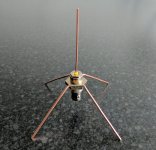I'm about to drill my belly skin for the transponder antenna. If it matters it is a Delta-Pop blade, just aft of the baggage wall on the right side. I started trying to draw a line that was exactly in the fore-aft direction to minimize drag, but then I started to wonder if I need to account for prop-wash? For a clockwise-turning propeller that would suggest pointing the blade to the right. Has anyone else wondered about this? I did a bit of googling but haven't managed to come up with anything yet.
Given the lengths that some of us go to for drag-minimisation (fuel vent fairings etc) it seems like this could actually be worth considering? At least on a Saturday night after a couple of good reds...!
Given the lengths that some of us go to for drag-minimisation (fuel vent fairings etc) it seems like this could actually be worth considering? At least on a Saturday night after a couple of good reds...!





